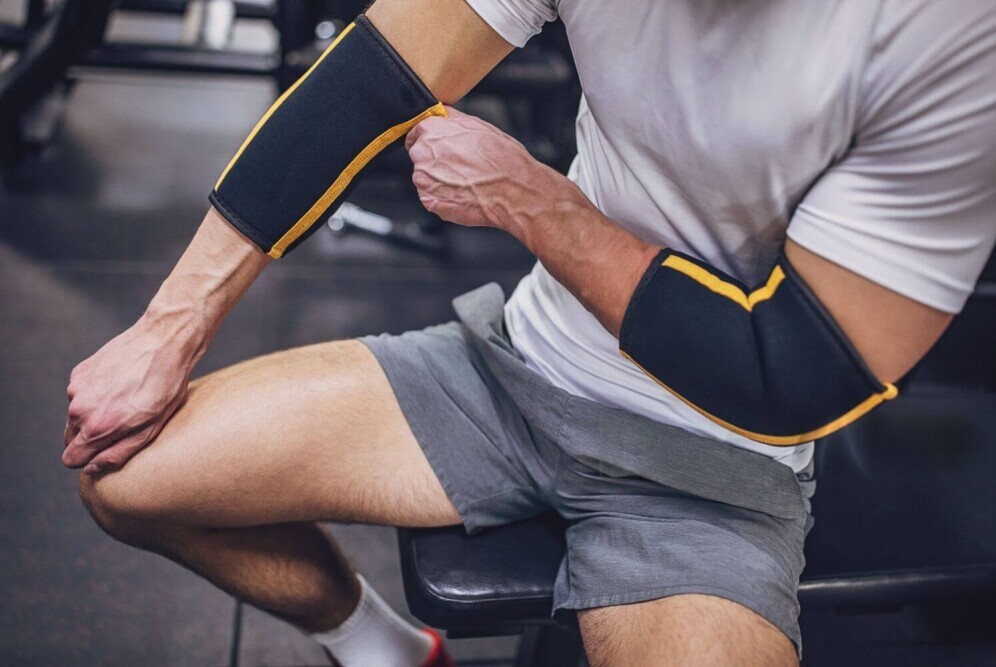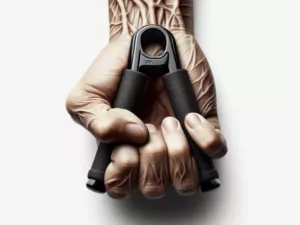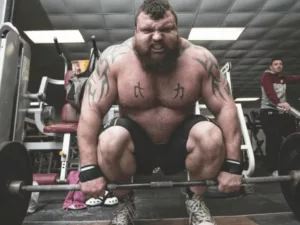(Last Updated on October 8, 2025 by Henry)
Elbow sleeves and compression cuffs have become essential gear for enthusiasts in sports like weightlifting, CrossFit, and powerlifting. These tools are not just trendy accessories; they play a critical role in performance and protection during intense physical activities, particularly when it comes to maintaining strong, stable joints that support your grip and upper-body strength.
A lot of athletes struggle with common elbow issues such as tendinitis, joint pain, and even instability during exercises primarily involving pressing and pulling.
By incorporating elbow sleeves and cuffs into their routine, athletes often find they’re able to protect their joints more effectively:
aiding faster recovery and enhancing overall lifting performance while maintaining a more secure grip on the bar during heavy or high-volume training sessions.
The primary benefits of using these sleeves and cuffs include providing joint protection against the wear and tear of heavy lifts or repetitive motion. They also contribute to quicker recovery times between sessions due to improved blood circulation and warmth retention around the joint. This warmth helps to improve muscle flexibility, forearm stability, and grip control, which can reduce the risk of injuries during crucial lifts.
This guide aims to serve as a comprehensive resource for athletes looking to maximize their training outcomes by using elbow sleeves and compression cuffs effectively. From understanding their mechanics to knowing when and how to use them, this article will cover all you need to know to make informed decisions regarding their use in your regimen, including how they indirectly support grip endurance and joint resilience for long-term performance gains.
Understanding Elbow Mechanics in Training
When you’re doing exercises like bench presses or pull-ups, your elbows are doing a lot more than you might realize. The elbow joint is a complex hinge that connects the upper arm to the forearm, allowing for both bending and rotation. This joint acts as a pivotal point in many compound movements, making it a crucial part of efficient lifting and overall grip strength stability during pushing and pulling exercises.
Despite its importance, the elbow is often prone to overuse injuries. This happens from the stress of repetitive movements, which can lead to tendinitis or joint pain. The constant back-and-forth motion of pressing, curling, or pulling actions can wear down the ligaments and tendons, causing discomfort and limiting performance, and over time, this also affects grip control and bar stability, especially during heavy compound lifts.
Maintaining stability around the elbow is key to executing powerful lifts. Stability doesn’t just prevent injuries; it enhances your ability to generate force safely while maintaining a steady grip and consistent power transfer through your forearms and wrists. That’s where compression gear steps in. By providing additional support to the joint, gear like elbow sleeves and cuffs help maintain proper alignment during lifts and reinforce the connection between grip strength, wrist alignment, and elbow positioning.
Supportive gear helps distribute the load evenly and reduce stress on the joint structures. This not only protects from acute injuries but also minimizes the risk of chronic issues developing over time. By improving circulation and joint warmth, elbow sleeves enhance muscle responsiveness and forearm engagement, both key to a stronger grip under heavy loads. By using such gear, athletes can maintain their progress safely, ensuring that they’re able to train consistently and effectively with better grip endurance and long-term elbow health.
What Are Elbow Sleeves & How They Work
Elbow sleeves are crafted from materials like neoprene or elastic, designed to wrap snugly around the arm to provide compression and warmth. These sleeves vary in thickness, often ranging from 5mm to 7mm, catering to different levels of support and flexibility needs for athletes focused on improving grip stability, joint control, and upper-body strength.
The primary function of compression is to boost blood flow around the joint, which not only keeps it warm but also enhances stability. This often translates to better performance and an added layer of protection during lifts. The increased warmth helps muscles contract more efficiently, improving forearm activation and grip endurance during pressing and pulling movements. By keeping the elbows warm and mobile, sleeves help ensure a stronger grip connection between your hands, wrists, and elbows.
Various types of elbow sleeves are available to suit specific training needs. For instance, some are tailored for heavy lifting, offering thicker material and a tighter fit, while others are more suited for activities like CrossFit, which requires a balance between support and flexibility. Selecting the right sleeve can influence how effectively you maintain grip control and joint alignment during high-intensity sessions.
Wearing elbow sleeves can significantly reduce inflammation and improve muscle control during strenuous activities. The compression helps decrease joint swelling and can aid in quicker recovery post-training. In addition, the enhanced circulation from compression supports forearm engagement, which plays a key role in grip strength and bar stability. This makes them a valuable asset for anyone looking to protect their elbows while enhancing their workouts and maintaining powerful, consistent grip performance across lifts.
Understanding Elbow Compression Cuffs
Elbow compression cuffs are a bit different from sleeves, and understanding these differences can help in making an informed decision about which one might be right for you. Unlike sleeves, compression cuffs are shorter in length and provide targeted support, making them ideal for lifters who need precise pressure for pain relief, recovery, and improved grip stability during heavy training.
Designed for situations where pinpoint compression is more effective than full-joint support, cuffs work wonders in specific scenarios like powerlifting, rehab, or accessory work. Their design focuses on delivering pressure to a specific area, which can be particularly beneficial for managing pain in a targeted spot while also maintaining forearm and wrist alignment for stronger bar control and grip endurance.
One of the excellent use cases for compression cuffs is during powerlifting. These intense lifting sessions can exert substantial strain on particular points around the joint, and having targeted compression can alleviate discomfort without hindering a full range of motion. By stabilizing the elbow flexors and extensors, compression cuffs indirectly enhance grip strength and pulling performance, helping athletes maintain better control through each rep.
Quick comparison with sleeves reveals that while sleeves offer full-joint stability suitable for a broader range of activities, cuffs focus on delivering acute support precisely where needed. This makes compression cuffs particularly useful for athletes managing elbow tendinitis, golfer’s elbow, or similar overuse injuries that affect both joint integrity and grip performance. This makes them a fantastic option for lifters dealing with specific pain areas but who still need full mobility for their workouts.
Key Benefits of Elbow Sleeves & Compression Cuffs
Elbow sleeves and compression cuffs offer a host of benefits that go beyond just support and protection. One of the standout advantages is enhanced joint stability and improved grip control, both of which are crucial in reducing overextension and potential strain during lifts. This means that when wearing them, athletes can push their limits knowing their joints have that extra level of security and their grip strength remains consistent even under heavy load.
Improved blood circulation and muscle compression are other significant benefits. Although it may seem like a minor detail, better circulation can translate into faster recovery, reduced joint fatigue, and greater grip endurance during and after intense training sessions. This makes it ideal not just for those chasing new personal records but also for anyone wanting to bounce back quicker from regular gym sessions.
Reducing inflammation, swelling, and elbow tendinitis pain, often the aftermath of repetitive lifts, is another key strength. Regular use of compression gear can help mitigate chronic pain that might otherwise hinder long-term progress and affect overall arm and grip performance.
The psychological boost is undeniable. Feeling more secure during heavy sessions can enhance confidence and control, letting athletes focus on proper form, technique, and stronger grip mechanics without being bogged down by worry over potential injuries.
These benefits are particularly noticeable in exercises that put heavy strain on the elbows, such as bench presses, dips, overhead presses, and curls. In these workouts, having that added support allows for a more efficient transfer of strength through the arms and wrists, promoting both grip stability and long-term joint health.
When and How to Use Elbow Sleeves or Cuffs
Knowing when and how to use elbow sleeves or compression cuffs can make all the difference in how effective they are for improving both joint stability and grip performance. For those diving into heavy lifting sessions, high-repetition sets, or grip-intensive training, this gear becomes particularly beneficial. They provide the essential elbow and forearm support needed to keep the joints stable and maintain a consistent grip under load during physically demanding tasks.
Putting on these sleeves or cuffs correctly ensures that they deliver the right amount of compression and stimulation without restricting movement. Carefully pulling them over your arm and positioning them properly allows for optimal blood flow and muscle activation, offering the right mix of support, flexibility, and grip control during lifts. It’s not just about slipping them on: precision in placement can truly enhance their effectiveness and prevent unnecessary strain on the wrists and elbows.
However, relying on them too much has its pitfalls. While they offer excellent joint protection, it’s important to maintain natural forearm and grip strength by occasionally training without them. This practice ensures that the muscles, tendons, and connective tissues around the elbow develop resilience and grip endurance on their own.
Distinguishing between when to use sleeves and when to reach for cuffs is just as important. Elbow sleeves provide full-joint compression for overall stability, while elbow cuffs target specific pain points and tendinitis relief. Depending on whether the focus is on performing heavy bench presses, improving grip stability, or targeting recovery during rehabilitation, choosing the right option can amplify results and protect long-term performance.
Choosing the Right Type, Fit, and Material
Selecting the right elbow sleeve or compression cuff comes down to three main considerations: material, fit, and intended use. Each of these factors plays a crucial role in determining how effective your support gear will be: whether you’re training for general fitness, powerlifting, or improving grip endurance and forearm stability.
Materials like neoprene, elastic, and nylon each offer unique benefits for joint protection and performance. Neoprene sleeves are known for their durability, warmth retention, and ability to support consistent grip pressure during heavy lifts, making them a favorite for powerlifters and Strongman athletes. Elastic sleeves, on the other hand, provide enhanced flexibility and mobility, making them ideal for CrossFit, functional training, or grip-based endurance workouts.
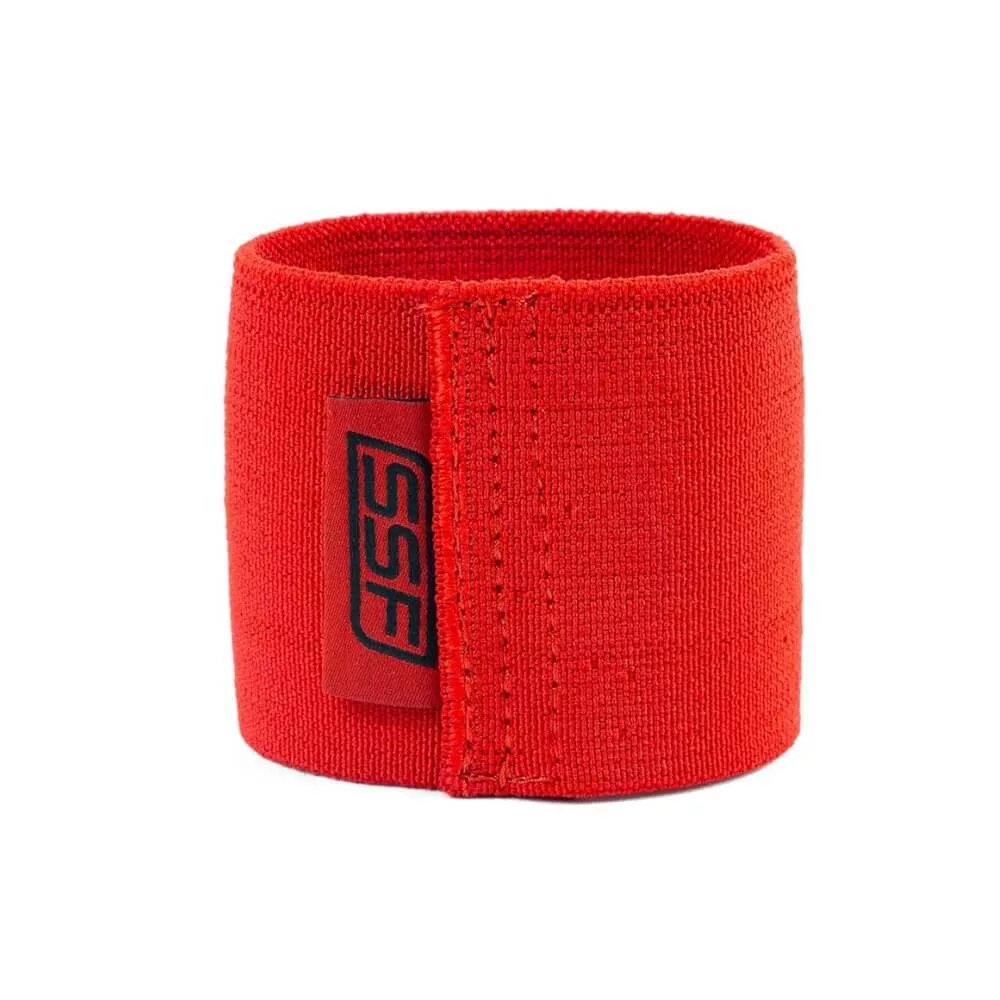
Can a Max Compression Elbow Cuff Relieve Joint Pain Faster?
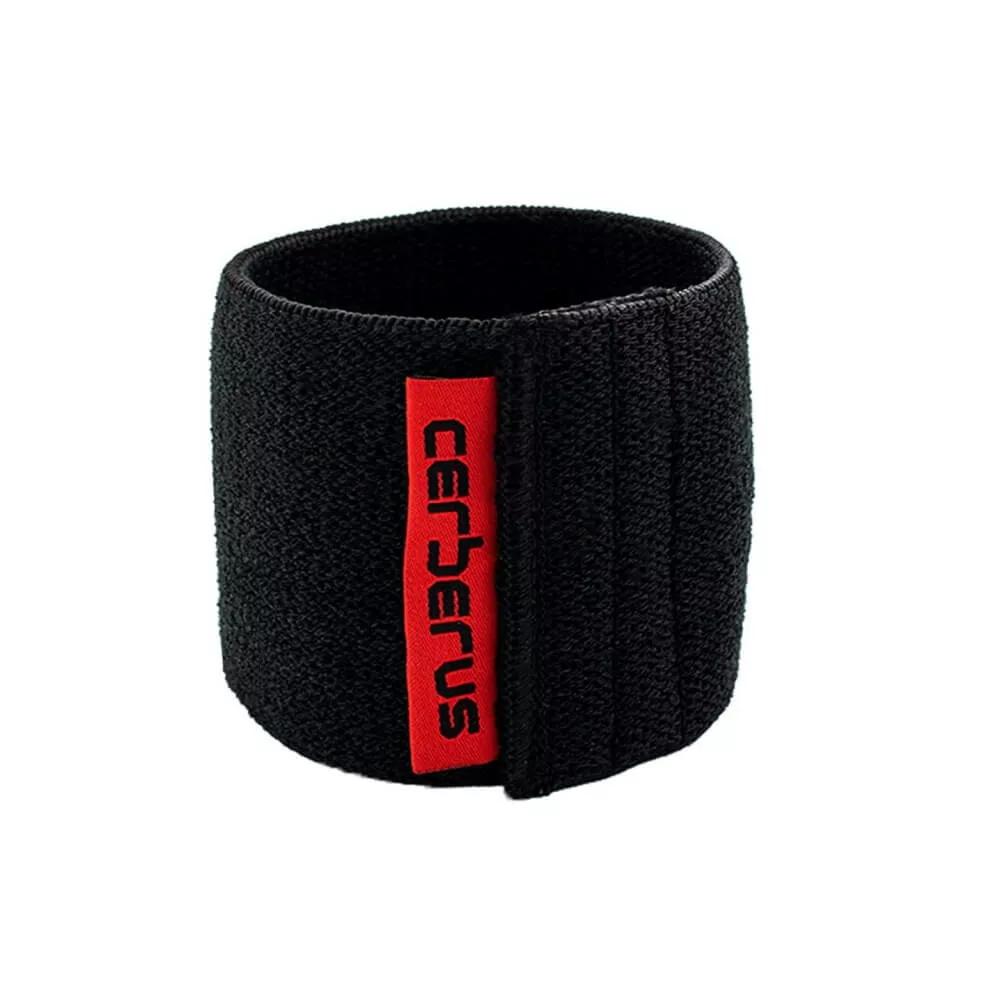
Is a Normal Compression Elbow Cuff Enough to Protect Your Joints?
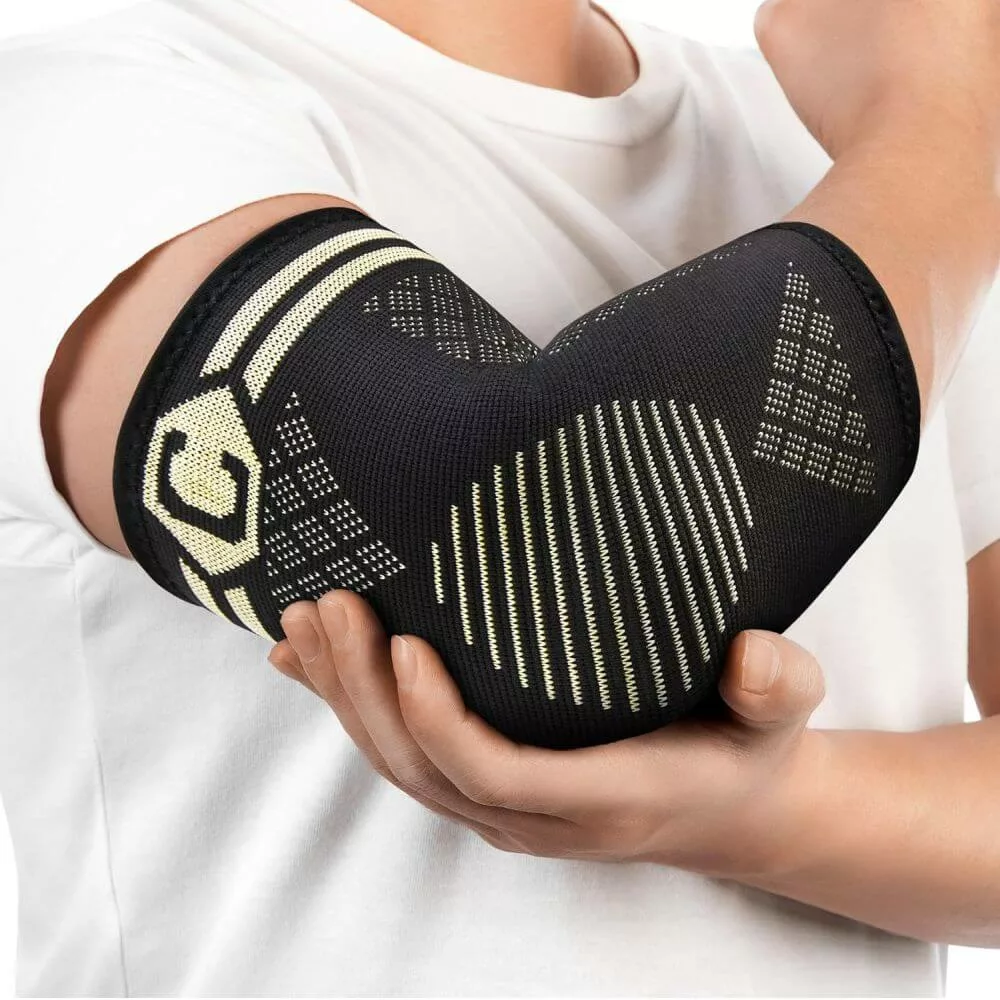
Can an Elbow Compression Sleeve Relieve Pain & Support Recovery?
The thickness of the sleeve determines the level of compression and muscle warmth. Lighter sleeves work well for daily training or grip accessory exercises, offering support without restricting range of motion. In contrast, thicker 7mm sleeves are perfect for max-effort lifts, giving robust joint stability and helping maintain consistent grip strength under pressure.
Ensuring a proper fit can make a world of difference. It’s essential to measure your forearm and bicep accurately to achieve a snug fit that doesn’t restrict circulation. A well-fitted sleeve will hug the arm comfortably, promoting steady blood flow, improved muscle activation, and greater grip control during compound lifts.
Deciding between elbow sleeves and compression cuffs depends on your training goals and current joint condition. If you’re aiming to lift heavier and stabilize your grip through full joint compression, sleeves are the go-to. However, if you’re managing localized tendinitis, elbow strain, or grip-related fatigue, compression cuffs deliver targeted pressure for quicker recovery.
Common Mistakes and Misconceptions
Even the best elbow sleeves or compression cuffs can fail to deliver results if used incorrectly. A common mistake is wearing sleeves or cuffs too tightly or during every single workout. While it’s tempting to think that more compression equals better support, overly tight gear can actually reduce blood flow, impair muscle recovery, and weaken grip endurance over time. The goal should always be balanced compression: enough to enhance joint stability and grip control, but not so much that it limits performance.
Another misconception is mixing up different types of support gear, such as confusing elbow sleeves with wrist wraps or knee sleeves. Each serves a unique purpose: elbow sleeves stabilize the joint and improve grip alignment during pressing movements, while wrist wraps focus on wrist positioning and grip mechanics. Using the wrong gear can reduce effectiveness and even disrupt your lifting form or grip coordination.
Neglecting mobility and strengthening exercises for the elbows is another common oversight. Gear should complement, not replace, joint training. Incorporating resistance bands, forearm curls, and grip-strength drills can dramatically improve joint flexibility and grip stability, ensuring that the muscles supporting your elbows grow stronger and more resilient.
Another silent issue is continuing to use worn-out sleeves or cuffs that have lost elasticity. As compression fades, so does their ability to support your grip and protect the tendons. Monitoring the condition of your gear and replacing it when needed ensures consistent compression, warmth, and circulation around the joint.
To truly maintain long-term elbow and grip health, balance gear use with functional strength and mobility exercises. By using your sleeves and cuffs strategically, only when needed, you’ll build natural joint resilience, stronger grip performance, and enhanced overall lifting efficiency.
Care, Maintenance & Final Tips
Keeping your elbow sleeves and compression cuffs in top shape requires consistent care and maintenance. Proper cleaning is pivotal, usually best achieved through hand washing or a gentle machine cycle. This helps preserve their elasticity, compression level, and support for grip performance over time. Clean gear not only lasts longer but also maintains the firm, secure feel essential for stability during lifts.
Once washed, proper drying and storage practices are essential. Always air dry thoroughly to prevent odor buildup or material breakdown. Avoid dryers or direct sunlight, which can weaken the fibers and reduce compression quality. Storing your sleeves and cuffs in a cool, dry space extends their lifespan and ensures they’re ready to deliver consistent joint support and grip enhancement whenever you train.
Be vigilant about checking for wear and tear. These tools can only provide optimal protection if they maintain tight compression and rebound elasticity. Once they start to loosen or lose structure, it’s time to replace them. Worn-out sleeves may feel comfortable but offer less grip stability and reduced tendon support, increasing your risk of strain or injury.
These are more than just accessories; they’re an investment in long-term joint health, lifting power, and grip control. Maintaining your recovery gear properly ensures that every rep, press, or pull feels supported, stable, and efficient. Using these resources together helps you protect your elbows, strengthen your grip, and build the kind of resilience that translates into lasting progress in every lift.
Thanks for Stopping By
Have Questions?
Please Leave A Comment

